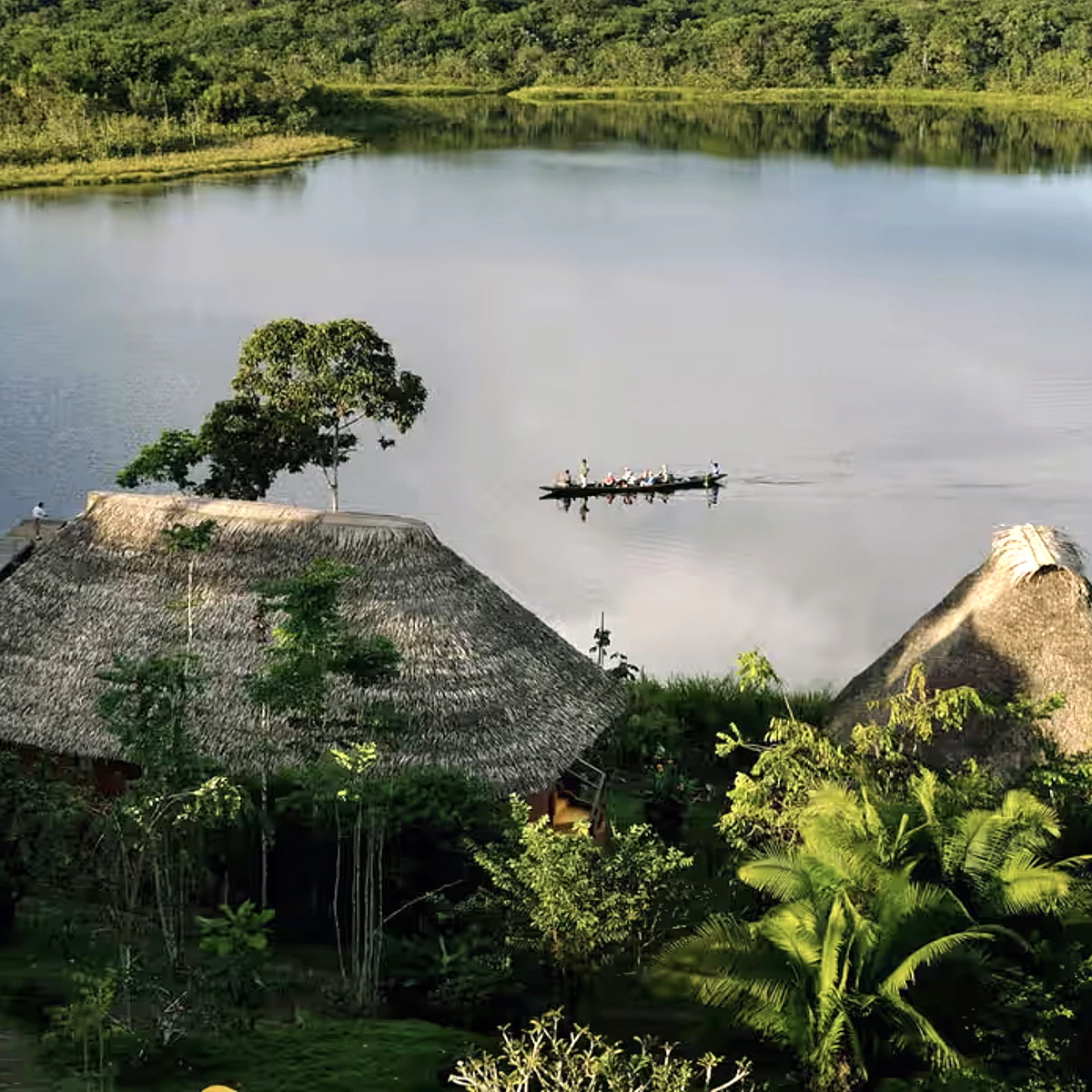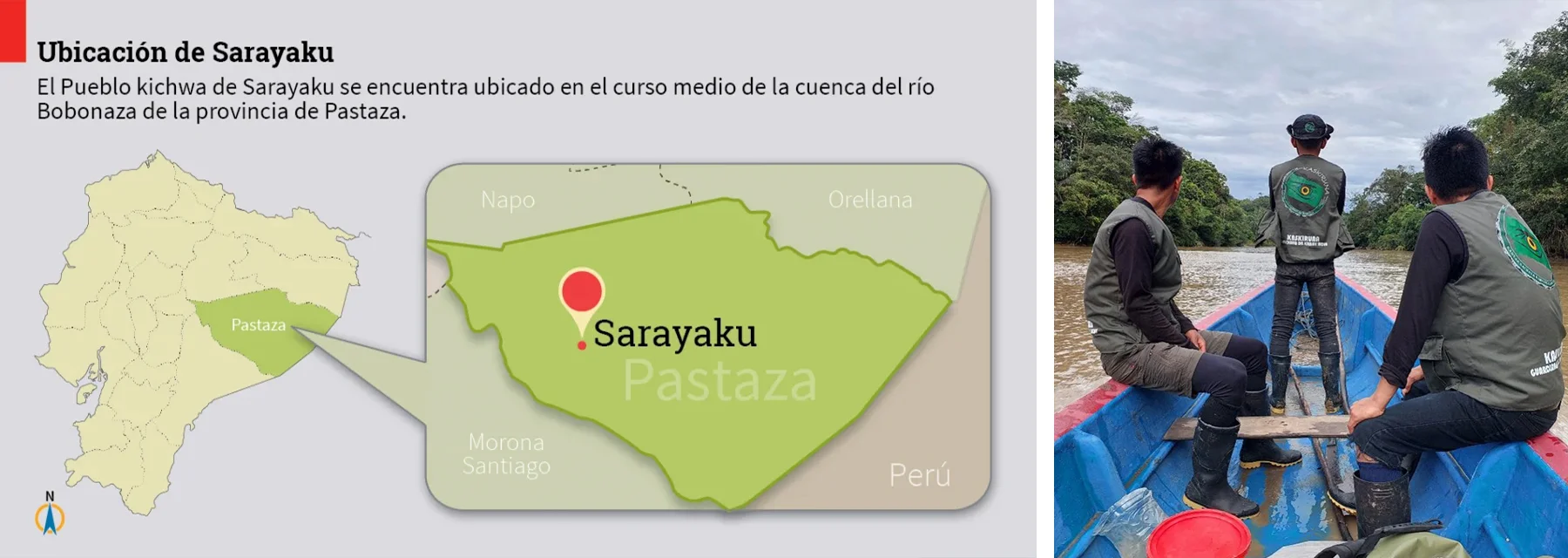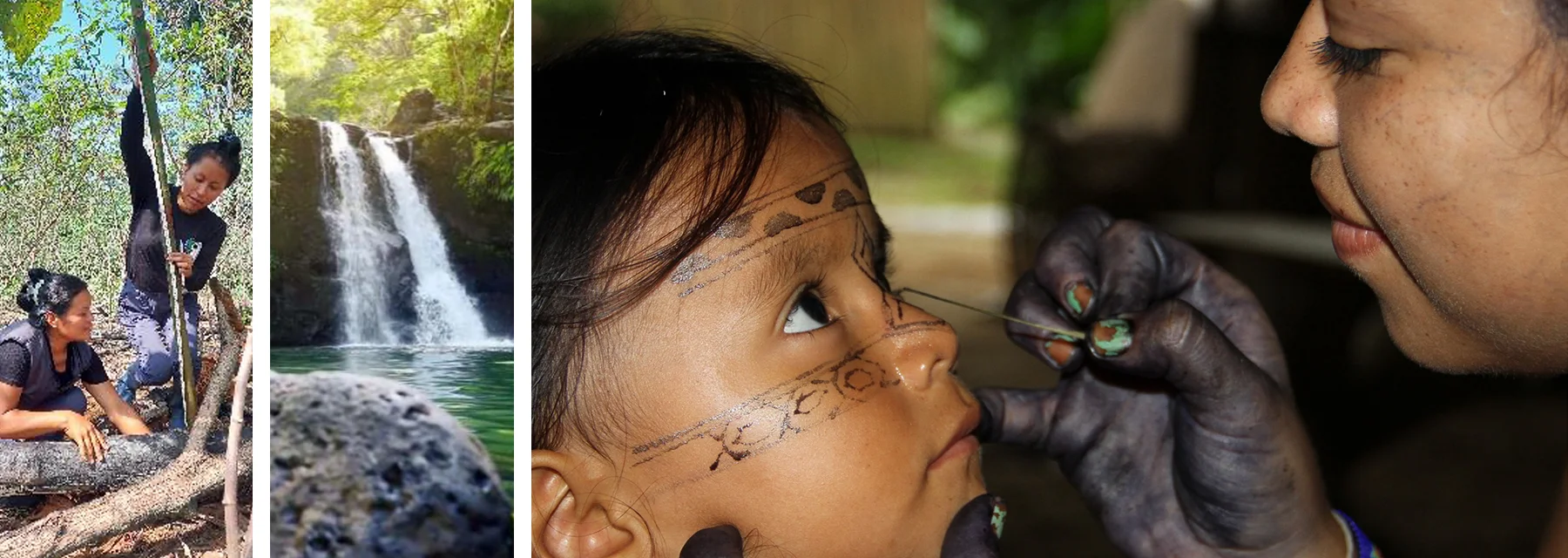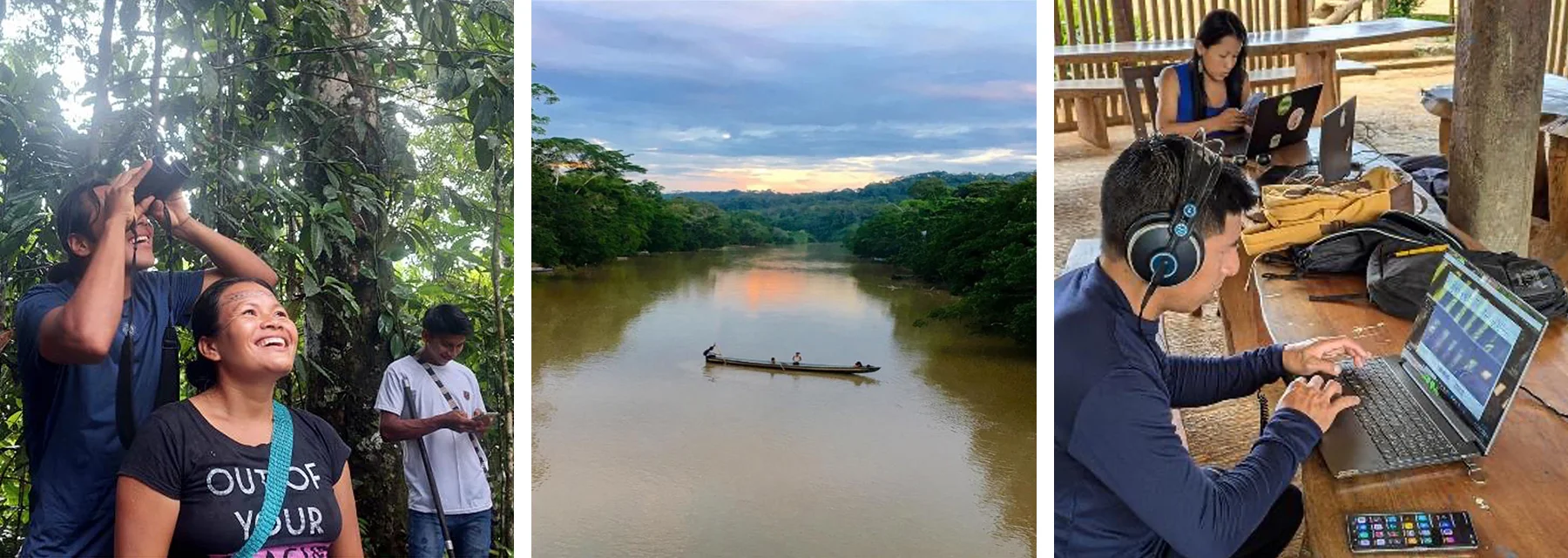
Forest Conservation
Kichwa Peoples of Sarayaku
Pastaza, Ecuadorian Amazon
Total area: 144,800 hectares
People benefitting: 1,500
Carbon benefit: 73,000 tCO2 per year
Kawsay Ñampi - “Way of Life”
The Climate Justice Standard’s pilot project is a testament to the power of Indigenous-led conservation. This initiative is not just about protecting an expanse of rainforest; it's about preserving a way of life, safeguarding biodiversity, and combating climate change through the wisdom and leadership of the Sarayaku people.

The Kichwa People of Sarayaku are located in the Ecuadorian Amazon (Pastaza province), in the Bobonaza River basin. Map courtesy of sarayaku.org
The threat of deforestation
The Sarayaku People confront a critical challenge: vast oil reserves lying beneath their ancestral lands. This discovery has sparked interest in oil development, bringing with it the dangers of road construction, logging, and extensive palm oil production. These activities threaten to disrupt 144,800 hectares of pristine rainforest. Despite strong opposition from the Sarayaku people, the potential for oil development could jeopardize not only their environment and traditional way of life but also contribute to global climate change challenges.

A climate justice approach
The Kawsay Ñampi project, meaning “way of life” in Kichwa, is a response to this pressing issue. Led by the Kichwa People of Sarayaku and co-developed with Dr. Tracey Osborne and team from the UC Center for Climate Justice, this initiative is the first to be piloted under the Climate Justice (CJ) Standard. Kawsay Ñampi aims to protect the Sarayaku territory by promoting traditional environmental management and territorial governance, rooted in the Living Forest (Kawsak Sacha) concept which views the forest as sacred and inhabited by protective beings. This project aims to preserve the forest's sanctity and biodiversity.

Sarayaku’s Life Plan and vision for conservation
Central to the Kawsay Ñampi project is Sarayaku's Life Plan, a detailed blueprint for ensuring a harmonious existence between the people and their environment. The plan encompasses a comprehensive strategy for sustainable forest use and strict territorial control to avert destructive extraction activities. This Life Plan embodies a new model of value and well-being, aspiring to maintain the ecosystem's integrity and the community's cultural heritage.